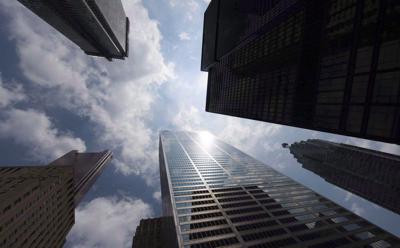A new way of banking that would boost savings, increase access to credit, and lower interest rates might soon be coming to Canada.
The federal government is expected to announce a legislative framework for ‚Äėopen banking‚Äô in its 2024 budget, to be released on April 16. It has been on Ottawa‚Äôs radar since 2018, and Bill C-365, which proposes to mandate its implementation, is making its way through the House of Commons.
Roughly nine million Canadians currently disclose their financial information with service providers by sharing their confidential banking usernames and passwords, according to government data. This process, called ‚Äėscreen-scraping,‚Äô is unregulated, slows down services and can pose risks to their privacy.
With open banking, also known as consumer-driven banking, that would change. Canadian consumers and small businesses could provide their financial data more securely, including their credit history, account balances and investments, to whomever they choose at the click of a button.
By giving consumers more control over their data, open banking is also poised to increase competition in the sector, opening the door for new players and challenging the Big Five banks, according to Canada’s Competition Bureau.
‚ÄúIncrementally¬†‚Ķ open banking will reduce risks in the economy and for people,‚ÄĚ said Andreas Park, professor of finance at the University of Toronto. ‚ÄúIf people use this effectively, it will be a huge benefit to (their) financial well being.‚ÄĚ
How open banking works
Open banking enables consumers with multiple bank accounts to access all their financial information in one place through, for instance, a mobile app.
It uses application programming interface (API) technology that allows two systems to communicate and exchange information with each other. It’s the same mechanism that prompts you to register or log into websites using a Google, Facebook, or Apple account, Park explained.
Once it’s fully operational, Mahima Poddar, head of personal banking at Equitable Bank, says small business owners could easily show their complete financial history to lenders without relying on a credit score, for example. Consumers could also switch banks more seamlessly, without headaches such as transferring pre-authorized bill payments.
‚Äú(Open banking) creates the ability to manage cash flow, it should give customers better access to credit¬†‚Ķ it allows them to save on fees or find cheaper options,‚ÄĚ through financial products offered by fintechs,¬†Poddar said.
One study using data from a fintech lender from Germany, where open banking is already in place, found that consumers with low credit scores are more likely to share financial data and benefit from increased loan approval rates and reduced interest rates.
While new to Canada, open banking policies exist in 49 countries, including the United Kingdom and Australia.
Innovation is ‚Äėseverely lacking‚Äô
Despite potential benefits, few Canadians reported knowing what open banking is or said they would use it, according to the Financial Consumer Agency of Canada (FCAC)
‚ÄúThose who choose to participate in open banking should be supported through strong consumer protections that are embedded in the design of the open banking framework itself,‚ÄĚ FCAC said in a research paper.
The Office of the Superintendent of Financial Institutions (OSFI), Canada’s banking regulator, has identified a range of risks around open banking, including liability, operational and cyber threats.
‚ÄúConsumer-driven banking in Canada should not only provide customers with choice, but also protect their personal information, including ensuring their data is only shared with parties who have been accredited to meet appropriate information protection standards,‚ÄĚ the Canadian Bankers Association wrote in an emailed statement.
To Tyler Thielmann, CEO of Canadian fintech Spring Financial, not implementing technologies like open banking threatens Canada‚Äôs productivity crisis, which has reached an ‚Äúemergency‚ÄĚ level, according to Bank of Canada senior deputy governor Carolyn Rogers.
‚ÄúInnovation in Canada is severely lacking across many sectors,‚ÄĚ Thielmann said. ‚ÄúAnd the financial sector is no different.‚Ä̬†
It could also further marginalize ‚Äėnonprime‚Äô consumers who are not being served by the big banks and rely on alternative access to financing, he said.
‚ÄúThey might not know the definition of open banking, but they‚Äôre definitely using these services online.‚ÄĚ




























To join the conversation set a first and last name in your user profile.
Sign in or register for free to join the Conversation